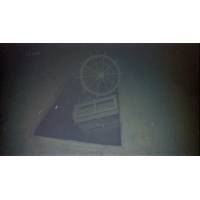
Wreck of WWII-era Cargo Ship Found in the Great Lakes
Lake Superior. After coming across a particularly deep anomaly, he reached out to the Great Lakes Shipwreck Historical Society (GLSHS) for help in identifying the potential wreck. In 2023 GLSHS Director of Marine Operations, Darryl Ertel, Fountain and crew of the R/V David Boyd, towed a Marine Sonic Technology side-scan sonar over the anomaly and soon realized and it was in-fact a shipwreck. Later ROV dives positively identified the submerged hulk the 244-foot bulk carrier Arlington.On April 30, 1940, the Arlington left Port Arthur, Ontario fully loaded with wheat en route Owen Sound, Ontario. She was
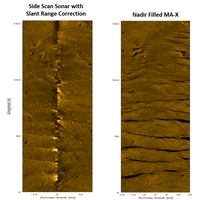
Klein Debuts MA-X Imaging Technology
Side scan sonar equipment developer Klein Marine Systems has developed a new, patent-pending technology called MA-X it believes will redefine ocean imaging, Klein's parent company Mitcham Industries announced this week.MA-X is essentially the next generation of side scan sonar whose arrays are physically mounted at an angle relative to the towfish or autonomous underwater vehicles (AUV) platform, Klein Marine Systems said. In this way, each narrow fan-beam is oriented at a downward and forward-grazing angle, resulting in an acoustic track over the sea bottom that starts from the port and starboard
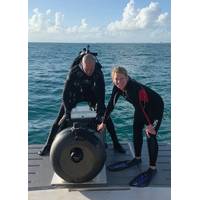
Subsea: The Future of Unmanned Vehicles
is in aerospace engineering and drones. “I’d never made anything related to subsea prior to starting Blue Robotics,” he said. “That’s led to a steep learning curve but a fresh (and perhaps sometimes naive) approach to what we’re doing.”“On the technology side of things, I think things are being pushed forward through the adoption of technology from other industries and bringing it to the subsea space,” said Jehangir. “For instance, our company is leveraging a lot of technology, electronics, and software that was developed for the drone
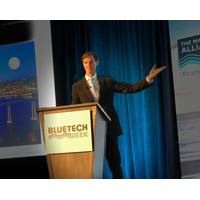
It is the 'Ocean Age,' Gallaudet Declares
government.Gallaudet delivered a comprehensive look inside his agencies priorities for the coming year, saying that, among other priorities, "seafood competitiveness" is a top priority, as the U.S. imports 90% of the seafood it consumes and runs a $16 billion seafood trade deficit.On the technology side, Gallaudet said that NOAA is "exponentially increasing its use of drone technology moving forward," with each ship carrying "fleets of drones" to help exponentially increase coverage of the oceans.Gallaudet also discussed the value of public/private partnerships, noting that
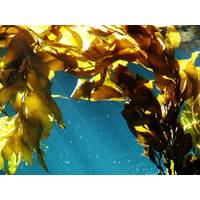
Seaweed: Fuel of the Future?
underwater observation system for monitoring large-scale seaweed farms for extended periods of time without human intervention. “The really cool thing about the ARPA-E MARINER program is that it funds both the development of the farming technology and the development of the monitoring technology side-by-side,” said researcher Erin Fischell, who will lead the vehicle project. The WHOI team will outfit an unmanned underwater vehicle with acoustic, optical and environmental sensors to monitor seaweed growth and health, equipment status and water column properties, such as nutrient


 February 2025
February 2025





